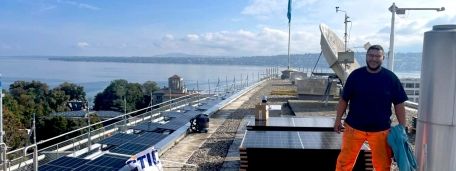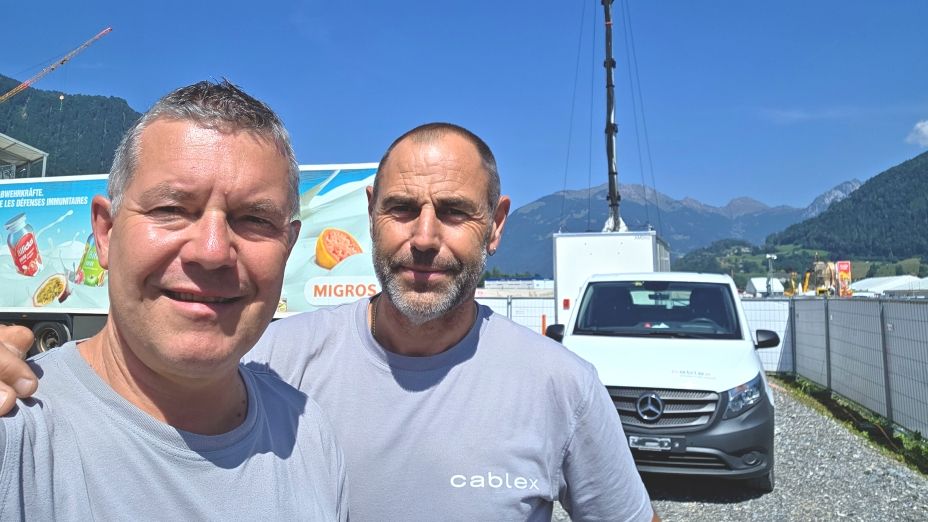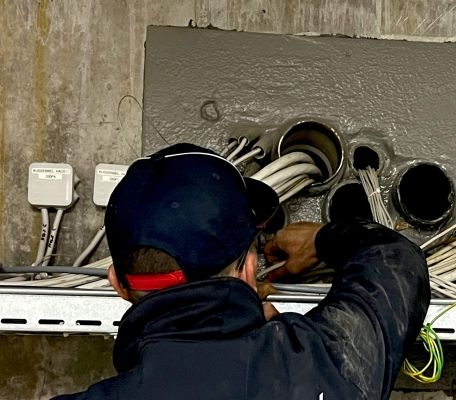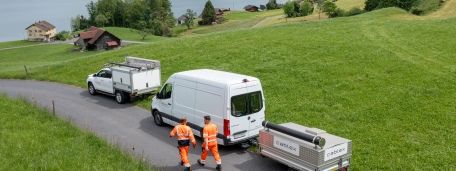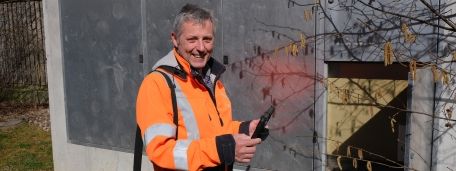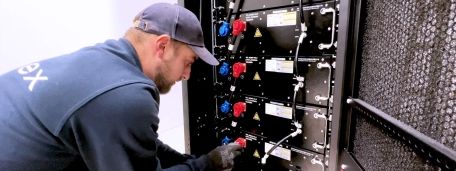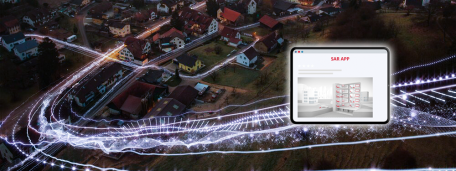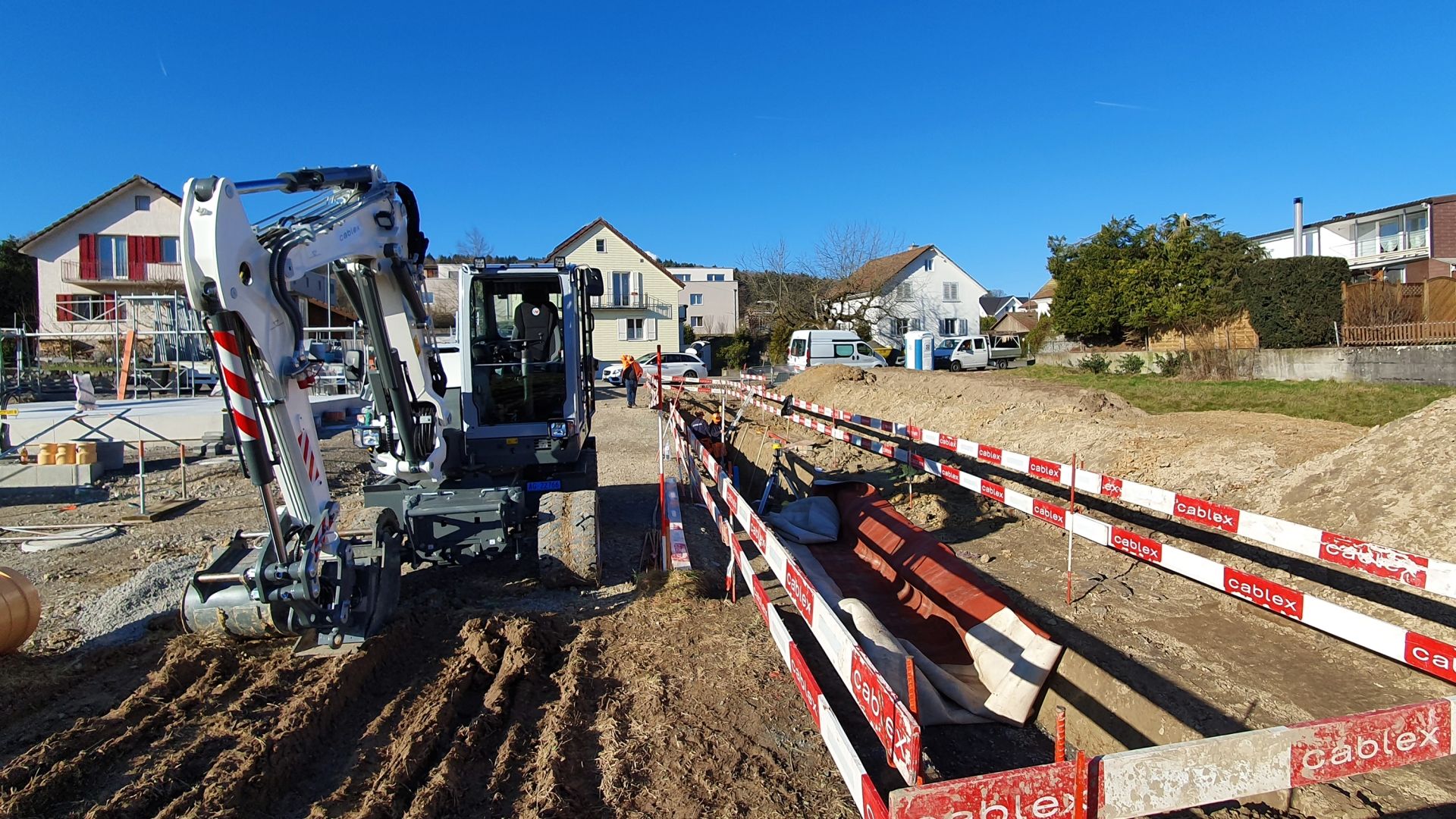
New hydraulic excavator in use.
A sewer line in Kölliken runs right through four new building lots. For this reason, the municipality decided to move the line closer to the parcel boundary and the access road. The trenches in which the sewage pipes were to run again had already been excavated by the cablex Unterentfelden civil work team. The newly acquired hydraulic excavator was used to perform this work. The eight-tonne vehicle is roadworthy and equipped with the latest engine Technology.
The pipes have to be laid very precisely.
"The challenge in the construction of sewage systems is adhering to the pipe gradient," said Samuel Schaffner, Head of Department Network Planning & Construction. "The pipes have to be laid very precisely, so that the wastewater can flow away unimpeded," explains Schaffner.
Main sewer pipes are usually laid with a gradient of 0.5 to 2.4 per cent. The height of the inlet and the outlet is already set (by the previous course of the pipe).
After the diversion of the sewage system, the gradient of the line is only 1.03 per cent. This corresponds to a slope of 1.03 cm per metre.
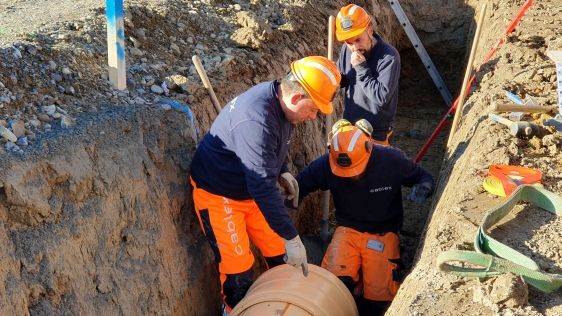
Alignment of the gradient.
The pipes have to be put into the trench with absolute precision in order to ensure that the pipe has a continuous gradient. Before the new sewer pipe is put into the trench, a layer of envelope concrete is put into the bottom of the trench.
Two concrete blocks serve as fixed points for the alignment of the gradient. The correct position of the blocks is determined using a laser measuring device.The audio signal of the laser indicates whether the concrete blocks are at the correct height. The longer the signal sounds, the more accurately the height of the block corresponds to the target. The envelope concrete bottom is aligned to the gradient with the concrete blocks as orientation.
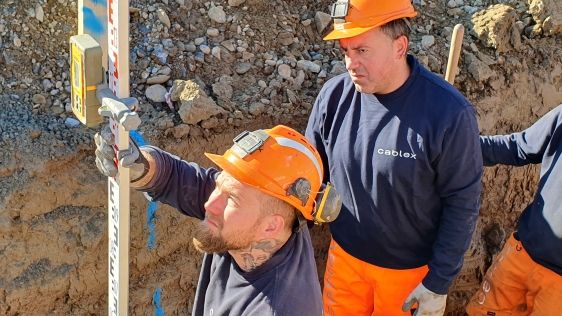
Proper alignment is also crucial for connecting the already laid pipe to the newly embedded pipe. Thanks to the correct position, the two pipe sections can be joined together. Before laying the pipe, it must be ensured that the inside of the pipe is clean. The rubber gaskets and the sleeve must be tight to withstand the pressure test that will be conducted later. For the pressure test, water is fed into the pipe, and the amount of water loss is measured.
Excavator operator with finesse.
Pipes of this size and weight are difficult to connect together manually. The hydraulic excavator is used by the excavator operator with a great deal of finesse to connect the inserted pipe to the already installed pipe. Here, the excavator has to apply pressure to the sewer pipe as accurately as possible in the alignment direction. The motto here is: "As little as possible, but as much as necessary." If the excavator operator exerts too much pressure on the pipe, he risks damaging the sleeve at the joint end. In this case, the next pipe cannot be connected.
To make matters worse, the shovel of the excavator has to operate in the excavator operator's blind spot. Seamless teamwork is called for here. The excavator operator must be able to rely on the instructions of his colleagues in the trench. Finally, the pipe is covered with envelope concrete. The concrete must harden sufficiently, so that it does not crack later.
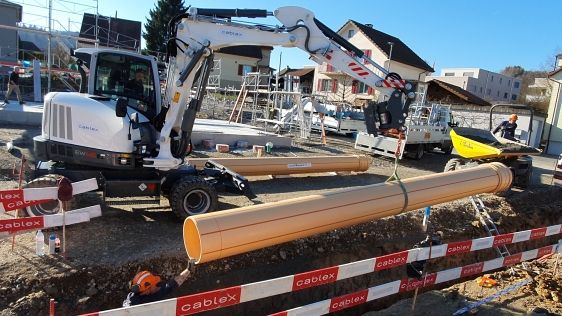
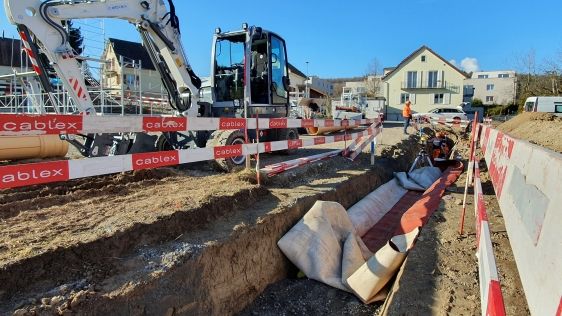
In cold weather, a protective mat is put on so the concrete does not freeze. Only a clean pipe bedding ensures that the pipe can later accommodate the pressure when the trench is filled. Once the diversion of the sewage system is complete, the manholes are constructed and the utility lines (e.g. electricity, telephone) are laid in the road, the road construction will be tackled. In this phase of construction, the granite edging is set, driveways are built and the asphalt layer is paved.


